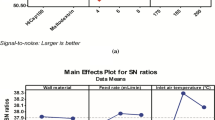Abstract
This study was designed to develop a microencapsulated, water-soluble isoflavone for application into milk and to examine the hypocholesterolemic effect of such a milk product in a rat diet. The coating material was medium-chain triglyceride (MCT) and the core material was water-soluble isoflavone. The microencapsulation efficiency was 70.2% when the ratio (w/w) of coating material to core material was 15∶1. The isoflavone release from the microcapsules was 8% after 3-day storage at 4°C. Inin vitro study, 4.0–9.3% of water-soluble isoflavone in simulated gastric fluid was released in the pH range of 2 to 5 after 60 min incubation; however, in simulated intestinal fluid at pH 8,87.6% of isoflavone was released from the capsules after 40 min incubation time. In sensory analysis, the scores of bitterness, astringency, and off-taste in the encapsulated isoflavone-added milk were slightly, but not significantly, different from those in uncapsulated, isoflavone-added milk. In blood analysis, total cholesterol was significantly decreased in the isoflavone-added group compared with that in the control after 6-week feeding. Therefore, this study confirmed the acceptability of MCT as a coating material in the microencapsulation of water-soluble isoflavone for application into milk, although a slight adverse effect was found in terms of sensory attributes. In addition, blood total cholesterol was lowered in rats which had been fed a cholesterol-reduced and microencapsulated, isoflavone-added milk for 6 weeks.
Similar content being viewed by others
References
Adlercreutz, H., Phytoestrogens: epidemiology and a possible role in cancer protection.Environ. Health Perspect., 103 (suppl. 7), 103–112 (1995).
Ali, A.A., Velasquez, M.T., Hansen, C.T., Mohamed, A.I., and Bhathena, S.J., Effects of soybean isoflavones, probiotics, and their interactions on lipid metabolism and endocrine system in an animal model of obesity and diabetes.J. Nutr. Biochem., 15, 583–590 (2004).
Anthony, M.S., Clarkson, T.B., Hughes, C.L., Morgan, T.M., and Burke, G.L., Soybean isoflavones improve cardiovascular risk factor without affecting the reproductive system of peripubertal rhesus monkeys.J. Nutr., 126, 43–50 (1996).
Arliss, R.M. and Biermann, C.A., Do soy isoflavones lower cholesterol, inhibit atherosclerosis, and play a role in cancer prevention.Holist. Nutr. Pract., 16(5), 40–48 (2002).
Barnes, S., Kim, H., and Darley-Usmer, V., Beyond ERα and Erβ: Estrogen receptor binding is only part of the isoflavone story.J. Nutr., 130, 6565–6575 (2000).
Berserieva, E.A., Inanov, A.A., Sansonova, T.P., Chermova, E.M., and Oragvelidze, E.M., Microencapsulated aromatizers for tea.Pishchevaya Promyshlennost. USSR, 1, 57–59 (1990).
Braun, S.D. and Olson N.F., Encapsulation of proteins and peptides in milk fat. Encapsulation efficiency and temperature and freezing stability.J. Microencapsulation, 3, 115–126 (1986).
Cassidy, A., Bingham, S., and Setchell, K.D.R., Biological effects of a diet of soy protein rich in isoflavones on the menstrual cycle of premenopausal woman.Am. J. Clin. Nutr., 60, 333–347 (1994).
Fanti, P., Monier-Faugere, M.C., Geng, Z., Schmidt, J., Morris (Ed-confirm) P.E., Cohen, D., and Malluche, H.G., The phytoestrogen genistein reduces bone loss in short-term ovariectomized rats.Osteoporos. Int., 8, 274–281 (1998).
Food and Drug Administration. Food labeling health claims: soy protein and coronary heart disease. Food and Drug Administration. Final Rule.Fed. Regist., 64, 57700–57733 (1999).
Freund, O.J., Amedee, D.R., and Laversanne, R.,In vitro andin vivo stability of new multilamellar vesicles.Life Sci., 67, 411–419 (2000).
Fukui, K., Tachibana, N., Wanezaki, S., Tsuzaki, S., Takamatsu, K., Yamamoto, T., Hashimoto, Y., and Shimoda, T., Isoflavonefree soy protein prepared by column chromatography reduces plasma cholesterol in rats.J. Agric. Food Chem., 50, 5717–5721 (2002).
Grundy, S.M., Brheimer, D., Blackburn, H., Brown, W.V., Kwiterovich, P.O., Mattson, F., Schonfeld, G., and Weidman, W.H., Rationale of the diet-heart statement of the American Heart Association Report of the Nutrition Committee.Circulation, 65, 839A-854A (1982).
Gurr, M.I., Dietary lipids and coronary disease: old evidence, new perspectives and progress.Lipid Res., 31, 195–243 (1992).
Jackson, L.S. and Lee, K., Microencapsulated iron for food fortification.J. Food Sci., 56, 1047–1050 (1991).
Kwak, H.S., Kwon, S.H., Lee, J.B., and Ahn, J.,In vitro stability of β-galactosidase microcapsules.Asian-Aust. J. Anim. Sci., 15, 1808–1818 (2002).
Kwak, H.S., Ihm, M.R., and Ahn, J., Microencapsulation of β-galactosidase with fatty acid esters.J. Dairy Sci., 84, 1576–1582 (2001).
Kwak, H.S., Yang, K.M., and Ahn, J., Microencapsulated iron for milk fortification.J. Agric. Food Chem., 51, 770–7774 (2003).
Lissin, L.W. and Cooke, J.P., Phytoestrogens and cardiovascular health.J. Am. Coll. Cardiol. 35, 1403–1410 (2000).
Magee, E.L. Jr. and Olson, N.F., Microencapsulation of cheese ripening systems: Formation of microcapsules.J. Dairy Sci., 64, 600–610 (1981a).
Magee, E.L. Jr. and Olson, N.F., Microencapsulation of cheese ripening systems: Stability of microcapsules.J. Dairy Sci., 64, 611–615 (1981b).
SAS User's Guide, Statistics, Version 5 Edition. SAS Inst., Inc., Cary, NC, U.S.A. (1985).
Seok, J.S., Kim, J.S., and Kwak, H.S., Microencapsulation of water-soluble isoflavone and physico-chemical property in milk.Arch. Pharm. Res., 26, 426–431 (2003).
Setchell, K.D.R. and Cassidy, A., Dietary isoflavones: Biological effects and relevance to human health.J. Nutr., 129, 758S-767S (1999).
Tikkanen, M.J. and Adlercreutz, H. Dietary soy-derived isoflavone phytoestrogens.Biochem. Pharmacol., 60, 1–5 (2000).
Author information
Authors and Affiliations
Corresponding author
Rights and permissions
About this article
Cite this article
Jeon, BJ., Kim, NC., Han, EM. et al. Application of microencapsulated isoflavone into milk. Arch Pharm Res 28, 859–865 (2005). https://doi.org/10.1007/BF02977354
Received:
Issue Date:
DOI: https://doi.org/10.1007/BF02977354




